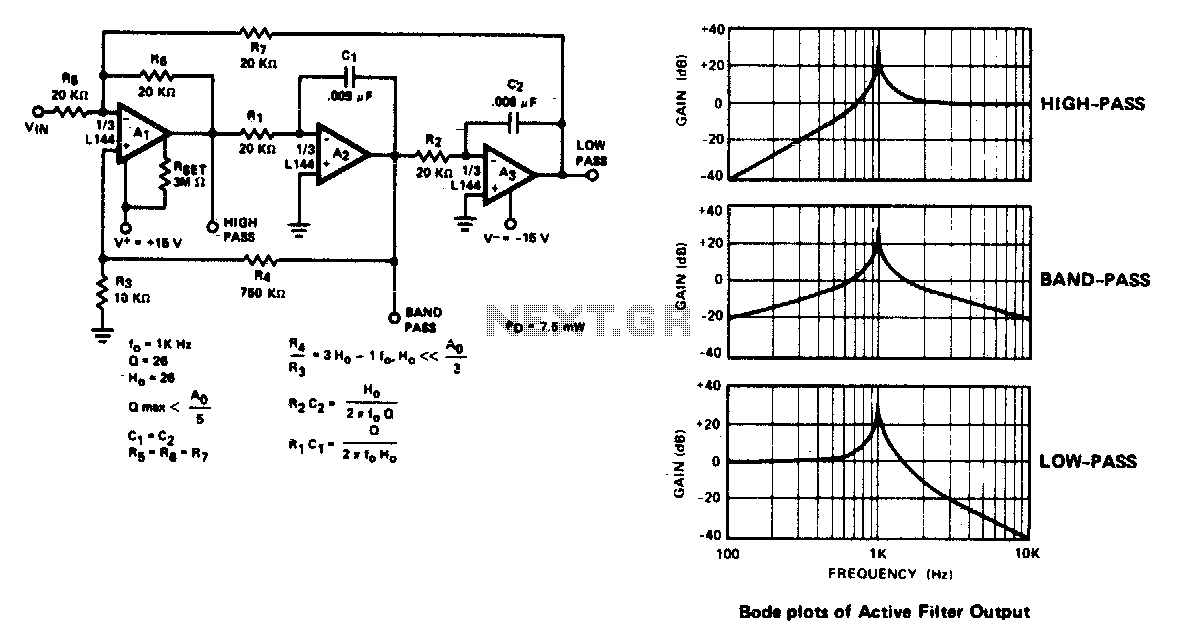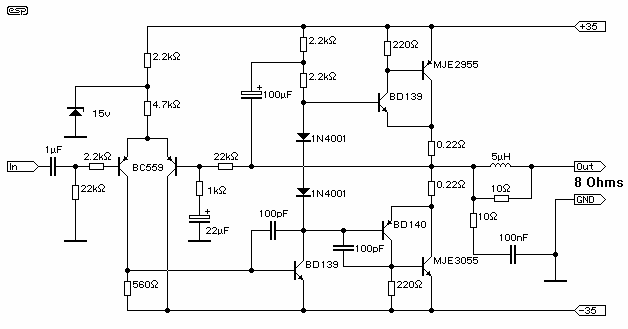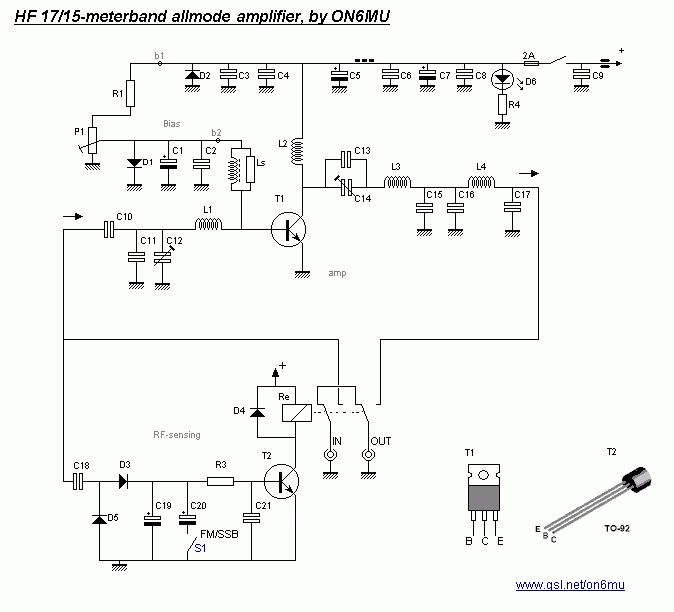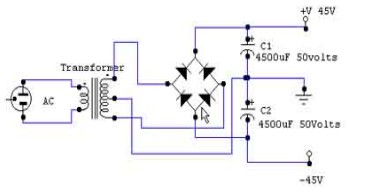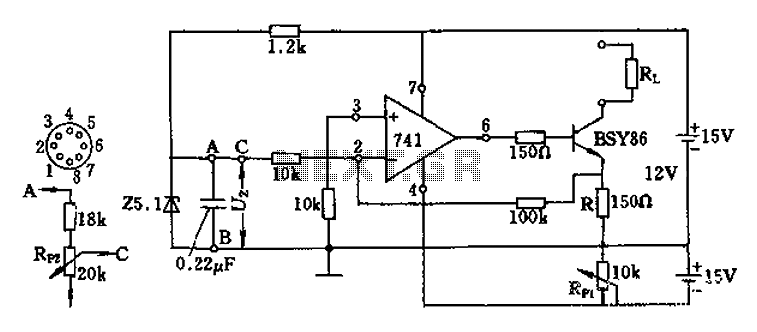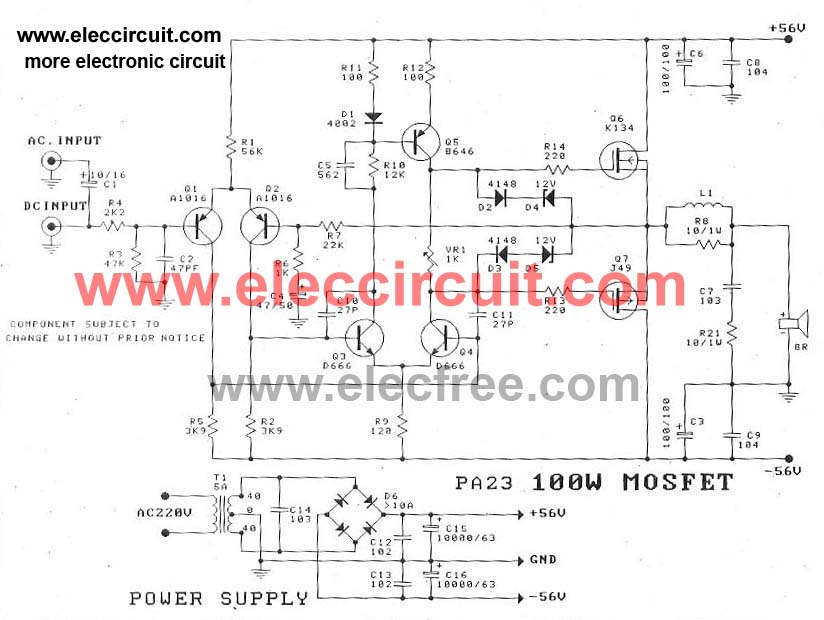
Radio Receiver Antenna Amplifier
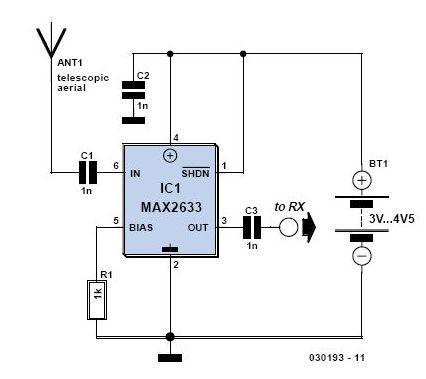
This is a high-performance radio receiver antenna amplifier designed for the entire VHF broadcast and PMR band (100-175 MHz) that can be successfully constructed without...
This radio receiver antenna amplifier is engineered to enhance the signal quality and reception capabilities across the VHF broadcast and PMR frequency range of 100 to 175 MHz. The design focuses on achieving high gain while maintaining low noise figure, ensuring optimal performance for various radio applications.
The amplifier circuit typically includes a low-noise transistor, which serves as the core amplification component. The choice of transistor is critical; it should have a low noise figure and sufficient gain to boost weak signals received by the antenna. Biasing resistors are employed to set the operating point of the transistor, ensuring it functions efficiently within the desired frequency range.
A matching network is often incorporated at the input and output stages of the amplifier. This network is designed to match the impedance of the antenna to that of the amplifier, maximizing power transfer and minimizing signal reflections. Capacitors and inductors are selected based on the desired frequency response, allowing for fine-tuning of the amplifier's performance.
Power supply considerations are also crucial for the successful operation of the amplifier. A regulated power supply is recommended to provide a stable voltage, which is essential for consistent performance. Additionally, decoupling capacitors are used to filter out any noise from the power supply lines, further enhancing the amplifier's signal integrity.
To protect the amplifier from potential damage due to static discharge or electrical surges, appropriate protection circuits may be included. These can consist of diodes or transient voltage suppressors that divert excess voltage away from sensitive components.
For practical implementation, the amplifier can be housed in a shielded enclosure to prevent electromagnetic interference (EMI) from affecting its performance. Proper grounding techniques should be applied to minimize noise and enhance overall reliability.
In summary, this high-performance radio receiver antenna amplifier is a sophisticated device tailored for VHF applications, combining advanced circuit design principles with robust construction techniques to achieve superior signal reception and amplification.Here is a high performance radio receiver antenna amplifier for the entire VHF broadcast and PMR band (100-175 MHz) which can be successfully built without.. 🔗 External reference
This radio receiver antenna amplifier is engineered to enhance the signal quality and reception capabilities across the VHF broadcast and PMR frequency range of 100 to 175 MHz. The design focuses on achieving high gain while maintaining low noise figure, ensuring optimal performance for various radio applications.
The amplifier circuit typically includes a low-noise transistor, which serves as the core amplification component. The choice of transistor is critical; it should have a low noise figure and sufficient gain to boost weak signals received by the antenna. Biasing resistors are employed to set the operating point of the transistor, ensuring it functions efficiently within the desired frequency range.
A matching network is often incorporated at the input and output stages of the amplifier. This network is designed to match the impedance of the antenna to that of the amplifier, maximizing power transfer and minimizing signal reflections. Capacitors and inductors are selected based on the desired frequency response, allowing for fine-tuning of the amplifier's performance.
Power supply considerations are also crucial for the successful operation of the amplifier. A regulated power supply is recommended to provide a stable voltage, which is essential for consistent performance. Additionally, decoupling capacitors are used to filter out any noise from the power supply lines, further enhancing the amplifier's signal integrity.
To protect the amplifier from potential damage due to static discharge or electrical surges, appropriate protection circuits may be included. These can consist of diodes or transient voltage suppressors that divert excess voltage away from sensitive components.
For practical implementation, the amplifier can be housed in a shielded enclosure to prevent electromagnetic interference (EMI) from affecting its performance. Proper grounding techniques should be applied to minimize noise and enhance overall reliability.
In summary, this high-performance radio receiver antenna amplifier is a sophisticated device tailored for VHF applications, combining advanced circuit design principles with robust construction techniques to achieve superior signal reception and amplification.Here is a high performance radio receiver antenna amplifier for the entire VHF broadcast and PMR band (100-175 MHz) which can be successfully built without.. 🔗 External reference
